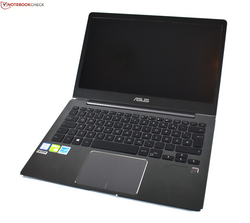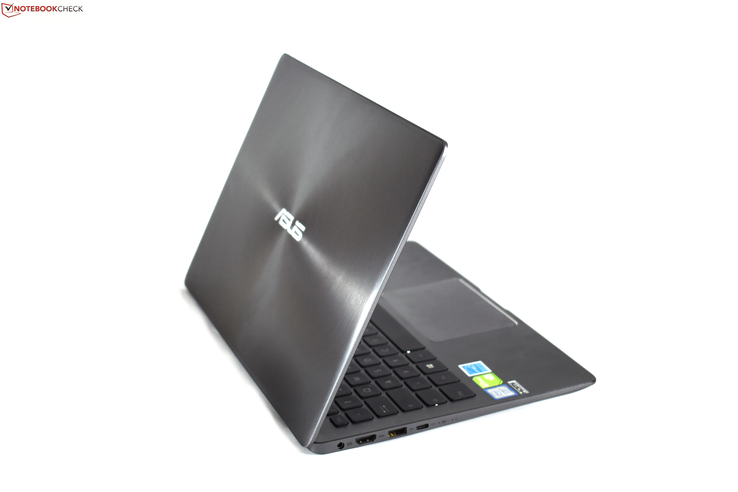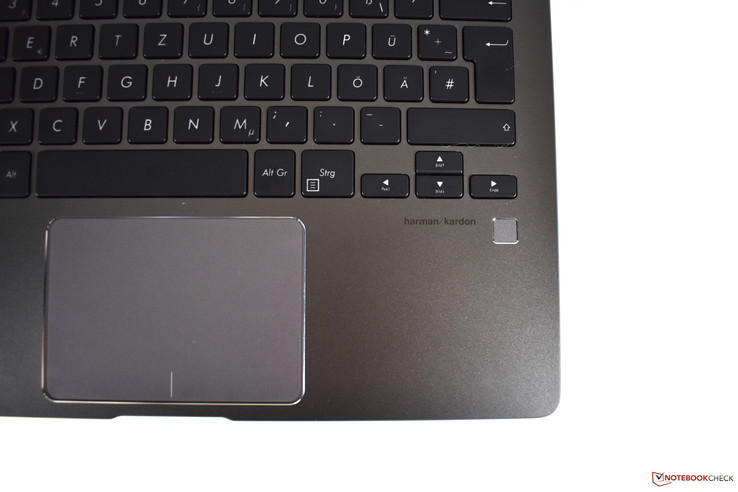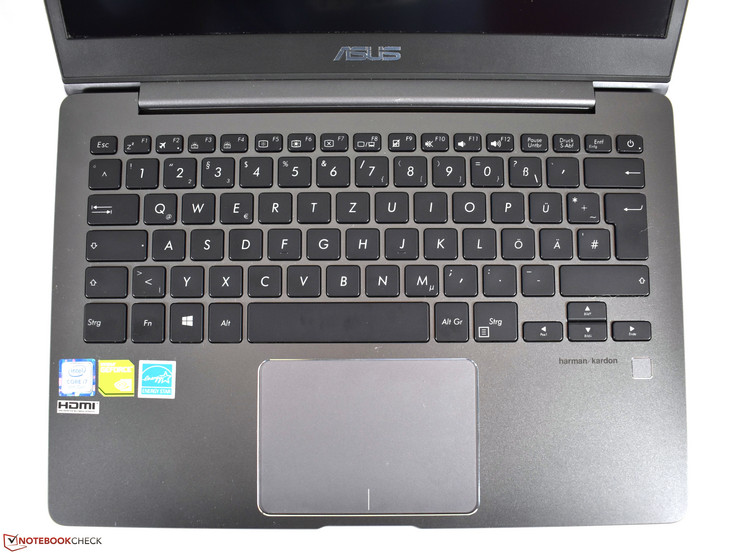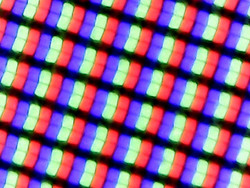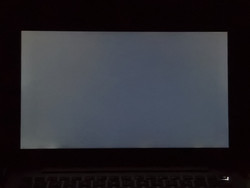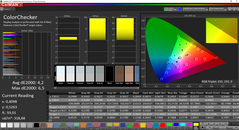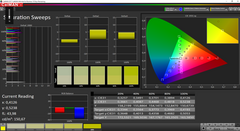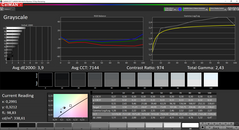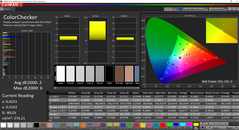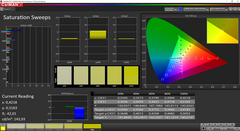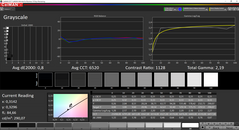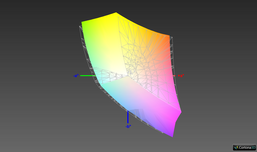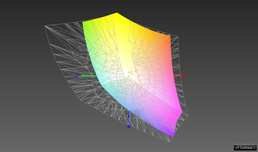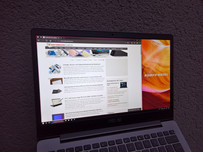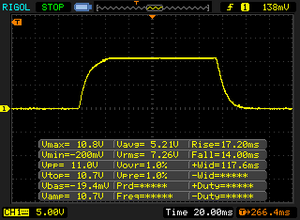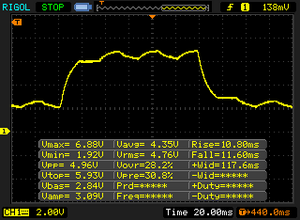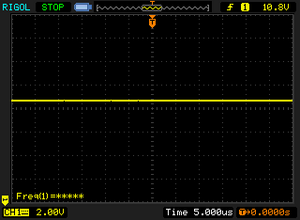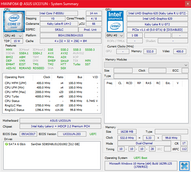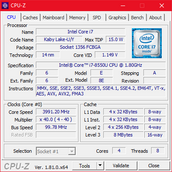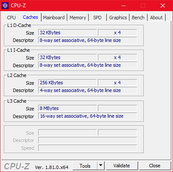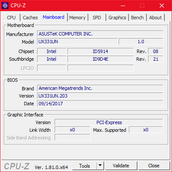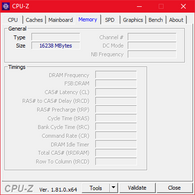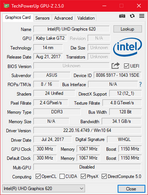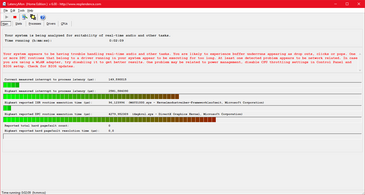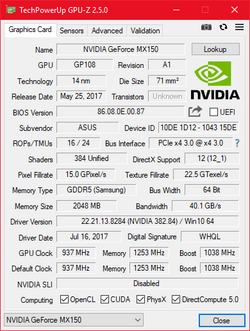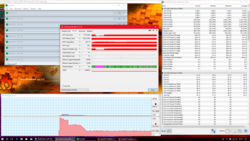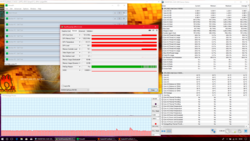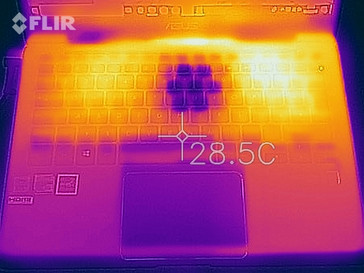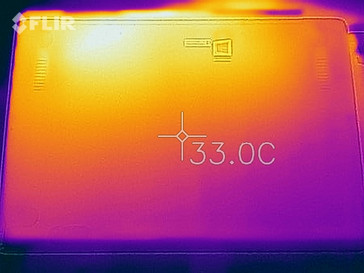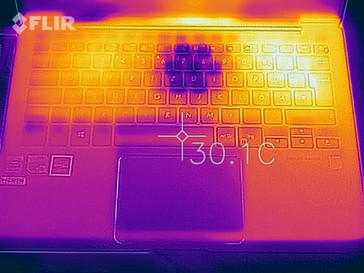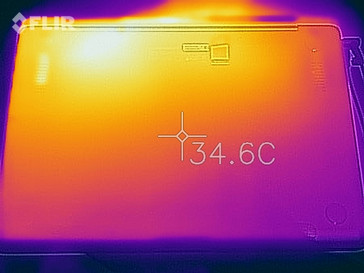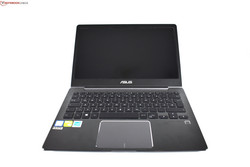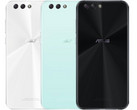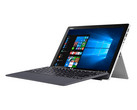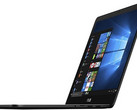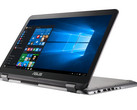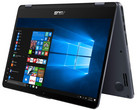Asus ZenBook 13 UX331UN (i7-8550U, MX150) Laptop Review

Not that long ago, the dominant and best-selling laptops were equipped with 15.6-inch displays. However, the ultrabook revolution that started in 2011 put the focus on smaller 13.3-inch devices. Asus, one of the ultrabook pioneers, has been part of that ultrabook revolution with its ZenBook series since the early days.
Today’s review unit is the ZenBook 13 UX331UN. Featuring a 13.3-inch display in a very thin metal case, an eighth-generation Intel Core CPU (Kaby Lake-Refresh), and an Nvidia GeForce MX150 GPU, the ZenBook is one of the strongest and most powerful contestants in this segment. Unfortunately for Asus, it is surrounded by more than worthy competitors like the Dell XPS 13, the HP Envy 13, the IdeaPad 320s-13IKBR, or the Swift 3 SF314-52G.
Our review unit was equipped with 16 GB of RAM and a 512 GB SSD. This particular configuration sells for 1400 Euros (~$1716) in Germany. US prices are not yet available.
Case
ZenBooks have a very high recognition value thanks to their brushed metal display lid with its concentric circles engraved into it. Other than that, the grayish case is everything but an eye-catcher and resembles a typical modern ultrabook. From a mere visual point of view, the blue model would certainly be more appealing. The display bezels are a bit wider than on many of its competitors; an aspect Asus should definitely consider addressing for the next iteration.
As mentioned before the entire case save for the display frame is made of metal, and overall build quality is excellent. Consequently, the base is very stiff and rigid despite its thickness of just 13.9 mm. Unfortunately, the display is much more susceptible to torsional forces and flexes quite easily. Selective force around the edges is no problem for the case but the closer you get to the center the more it flexes. Thus, the keyboard bends somewhat when typing fiercely.
The single hinge design’s maximum opening angle is 135 °, and the lid can be easily opened one-handed. On the downside this also means that the hinges are not firm enough to prevent display wobble entirely.
Reducing thickness and weight must have been one of Asus’ top priorities when designing the new ZenBook, and it shows. At only 13.9 mm it is ever so slightly thinner than the HP Envy 13 and a full millimeter thinner than the Dell XPS 13. In addition, at only 1.1 kg it is the lightest ultrabook in this test group but is also the largest of all the 13.3-inch contestants.
Connectivity
Connectivity options are adequate. Unfortunately, the ZenBook lacks support for Thunderbolt 3. In addition, Asus has failed to make the most out of USB-C by requiring an extra power port for charging the device instead of supporting charging via USB-C. To add insult to injury the USB-C port also lacks support for DisplayPort Alternate mode, meaning that it does not carry a video signal and cannot be used to connect to external displays.
SD Card Reader
Sometime in 2016, OEMs started omitting the SD card reader on notebooks more and more frequently. Today, compact notebooks and ultrabooks with SD card readers have become a rare sight, and unfortunately Asus has decided to follow the trend and installed a MicroSD instead of a full-sized SD card reader.
When benchmarked with our MicroSD reference card, a Toshiba Exceria Pro M501, it managed to transfer at a mediocre 80 MB/s.
| SD Card Reader | |
| average JPG Copy Test (av. of 3 runs) | |
| Dell XPS 13 i7-8550U | |
| Lenovo IdeaPad 320S-13IKB (Toshiba Exceria Pro M501) | |
| Asus ZenBook 13 UX331UN (Toshiba Exceria Pro M501) | |
| HP Envy 13-ad006ng (Toshiba Exceria Pro SDXC 64 GB UHS-II) | |
| Acer Swift 3 SF314-52G-89SL (Toshiba Exceria Pro SDXC 64 GB UHS-II) | |
| maximum AS SSD Seq Read Test (1GB) | |
| Dell XPS 13 i7-8550U | |
| Lenovo IdeaPad 320S-13IKB (Toshiba Exceria Pro M501) | |
| Asus ZenBook 13 UX331UN (Toshiba Exceria Pro M501) | |
| HP Envy 13-ad006ng (Toshiba Exceria Pro SDXC 64 GB UHS-II) | |
| Acer Swift 3 SF314-52G-89SL (Toshiba Exceria Pro SDXC 64 GB UHS-II) | |
Communication
Intel’s Wireless 8265 has become the de-facto standard for Kaby Lake and Kaby Lake-R based notebooks. The 2x2 AC Wi-Fi modem performed as expected, both in benchmarks and everyday use.
Security
Once upon a time, fingerprint-readers were only found on business notebooks but in the last few years, they have slowly but surely trickled down into the consumer space. The ZenBook features a touch fingerprint-reader that requires the finger to be placed on top of it instead of swiping across it. It worked as expected and allowed for a very fast login process.
Accessories
The ZenBook includes actually useful accessories in the box. In addition to a microfiber cleaning cloth for the display Asus also includes a matching sleeve for the UX331UN.
Maintenance
Ten T5 Torx screws have to be removed in order to get access to the ZenBook’s internal hardware. After that, the notebook started to come apart at the front but the bottom plate remained firmly attached to the base unit at the rear close to the hinge. We suspect plastic latches hold the bottom cover in place but were unable to locate and undo these with a spudger tool. In order to prevent damage to our review unit we decided to call it quits and left the case unopened.
With the bottom cover removed one should have access to various components, such as the battery, the SSD, or the fan. RAM is not upgradeable since it has been soldered onto the motherboard. Thus, defective RAM will require a motherboard replacement.
Warranty
Asus offers its ZenBook lineup with a two-year pickup & return limited warranty in Europe by default, but only a one-year carry-in limited warranty in the United States. Pickup and return means that Asus is going to pick the item up and ship it back to you once it has been fully repaired. As such, it beats the carry-in service that is most commonly offered as part of the default warranty package.
Please see our Guarantees, Return Policies and Warranties FAQ for country-specific information.
Input Devices
Keyboard
The ZenBook 13’s six-row keyboard features a four-stage backlight and a full-size layout. Other than the power button, which is located above the backspace key in the upper right corner, we haven’t had any issues with the keyboard layout at all. Keep in mind though that the Page Up/Down, Home and End keys can only be accessed via Fn key combination.
Unfortunately, the typing experience was rather poor. Key travel is short and feedback is very mushy, which means the feeling when typing is pretty awkward. Granted, there are much worse keyboards out there but that doesn’t make the ZenBook’s keyboard any better.
Touchpad
Fortunately, the touchpad was much better than the keyboard. It was very accurate and fast thanks to Microsoft’s Precision technology and drivers. Multitouch gestures were detected reliably and were spot-on every time.
The hardware itself was very decent as well. The ClickPad’s integrated buttons are very firm yet pleasantly quiet. The touchpad’s glass surface is very smooth, and all things considered we were very satisfied with the touchpad.
Display
The matte 16:9 FHD IPS display (1920x1080) is the only display currently offered for the UX331, and neither higher resolution displays nor touchscreens are available.
Our review unit was equipped with an AUO B113HAN04.9 panel. According to Panelook, this particular panel should offer up to 300 nits brightness. At 321 nits on average and a maximum of 338 nits, our review unit was even brighter than that. In our test group, the ZenBook’s display was the third brightest after the two XPS notebooks.
Brightness distribution was very decent (90%) and we found no evidence of PWM-flickering whatsoever. Unfortunately, there was some minor background-bleeding.
| |||||||||||||||||||||||||
Brightness Distribution: 90 %
Center on Battery: 335 cd/m²
Contrast: 966:1 (Black: 0.35 cd/m²)
ΔE ColorChecker Calman: 4.2 | ∀{0.5-29.43 Ø4.78}
ΔE Greyscale Calman: 3.9 | ∀{0.09-98 Ø5}
93.1% sRGB (Argyll 1.6.3 3D)
60.4% AdobeRGB 1998 (Argyll 1.6.3 3D)
66.4% AdobeRGB 1998 (Argyll 3D)
93.1% sRGB (Argyll 3D)
65.4% Display P3 (Argyll 3D)
Gamma: 2.43
CCT: 7144 K
| Asus ZenBook 13 UX331UN B133HAN04.9, , 1920x1080, 13.3" | Dell XPS 13 i7-8550U ID: Sharp SHP144A, Name: LQ133Z1, , 3200x1800, 13.3" | HP Envy 13-ad006ng BOE070E, , 1920x1080, 13.3" | Lenovo IdeaPad 320S-13IKB InfoVision M133NWF4R0, , 1920x1080, 13.3" | Acer Swift 3 SF314-52G-89SL AU Optronics B140HAN02.1, , 1920x1080, 14" | Dell XPS 13 9360 FHD i7 Iris SHP1449, , 1920x1080, 13.3" | |
|---|---|---|---|---|---|---|
| Display | -2% | -3% | 3% | -44% | -19% | |
| Display P3 Coverage (%) | 65.4 | 63.6 -3% | 66.8 2% | 66.3 1% | 36.09 -45% | 51.6 -21% |
| sRGB Coverage (%) | 93.1 | 93 0% | 86.3 -7% | 97.4 5% | 54.2 -42% | 77.4 -17% |
| AdobeRGB 1998 Coverage (%) | 66.4 | 65.4 -2% | 63.1 -5% | 68.1 3% | 37.28 -44% | 53.3 -20% |
| Response Times | -23% | -59% | -78% | -32% | -40% | |
| Response Time Grey 50% / Grey 80% * (ms) | 22.4 ? | 35.6 ? -59% | 48 ? -114% | 56.8 ? -154% | 41 ? -83% | 41.2 ? -84% |
| Response Time Black / White * (ms) | 31.2 ? | 27.2 ? 13% | 32 ? -3% | 31.6 ? -1% | 25 ? 20% | 30 ? 4% |
| PWM Frequency (Hz) | 19690 ? | 1000 ? | 198.4 ? | 19530 ? | ||
| Screen | -2% | -12% | 19% | -28% | 5% | |
| Brightness middle (cd/m²) | 338 | 386.1 14% | 281 -17% | 330 -2% | 233 -31% | 461 36% |
| Brightness (cd/m²) | 321 | 357 11% | 264 -18% | 304 -5% | 217 -32% | 418 30% |
| Brightness Distribution (%) | 90 | 83 -8% | 83 -8% | 88 -2% | 88 -2% | 85 -6% |
| Black Level * (cd/m²) | 0.35 | 0.33 6% | 0.23 34% | 0.25 29% | 0.27 23% | 0.2 43% |
| Contrast (:1) | 966 | 1170 21% | 1222 27% | 1320 37% | 863 -11% | 2305 139% |
| Colorchecker dE 2000 * | 4.2 | 4.2 -0% | 4.83 -15% | 1.8 57% | 5.85 -39% | 5.4 -29% |
| Colorchecker dE 2000 max. * | 6.5 | 7.6 -17% | 8.89 -37% | 4.3 34% | 11.51 -77% | 12.2 -88% |
| Greyscale dE 2000 * | 3.9 | 5.7 -46% | 6.63 -70% | 2.5 36% | 4.87 -25% | 5.4 -38% |
| Gamma | 2.43 91% | 2.28 96% | 1.85 119% | 2.11 104% | 2.47 89% | 2.15 102% |
| CCT | 7144 91% | 7336 89% | 6794 96% | 6588 99% | 6908 94% | 7258 90% |
| Color Space (Percent of AdobeRGB 1998) (%) | 60.4 | 59 -2% | 56 -7% | 61.8 2% | 34 -44% | 48.6 -20% |
| Color Space (Percent of sRGB) (%) | 93.1 | 92.2 -1% | 86 -8% | 97.3 5% | 54 -42% | 76.9 -17% |
| Total Average (Program / Settings) | -9% /
-5% | -25% /
-16% | -19% /
3% | -35% /
-32% | -18% /
-6% |
* ... smaller is better
A black level of 0.35 nits results in a contrast ratio of 966:1 - decent, but not exceptional. Most competitors offer a higher contrast ratio. Subjectively, the display was very nice to look at. Colors pop and blacks are dark enough to not have any grayish implications.
Out of the box, the panel had a minor blue tint - fairly uncommon for an IPS display. A blue tint is more common on TN panels while IPS panels more often than not exhibit a green tint. Regardless of tint, display calibration did help and managed to improve overall image quality significantly. As always, the resulting ICC profile can be found for download in the box above.
Color-space coverage is quite important for overall color quality, and the AUO panel did not disappoint. 93% sRGB is practically a guarantee for high color accuracy. Thus, despite missing complete sRGB coverage by a few percent, the display is most certainly not going to stand in the way of any (semi-) professional photo-editing ambitions.
Outdoor usability depends mostly on two factors: brightness and reflectivity. Given the matte display and a brightness of over 320 nits it is safe to say that the ZenBook is more than just usable outdoors. Its outdoor ambitions will only be thwarted by direct sunlight; indirect bright sunlight caused no issues at all.
Display Response Times
| ↔ Response Time Black to White | ||
|---|---|---|
| 31.2 ms ... rise ↗ and fall ↘ combined | ↗ 17.2 ms rise | |
| ↘ 14 ms fall | ||
| The screen shows slow response rates in our tests and will be unsatisfactory for gamers. In comparison, all tested devices range from 0.1 (minimum) to 240 (maximum) ms. » 84 % of all devices are better. This means that the measured response time is worse than the average of all tested devices (20.2 ms). | ||
| ↔ Response Time 50% Grey to 80% Grey | ||
| 22.4 ms ... rise ↗ and fall ↘ combined | ↗ 10.8 ms rise | |
| ↘ 11.6 ms fall | ||
| The screen shows good response rates in our tests, but may be too slow for competitive gamers. In comparison, all tested devices range from 0.165 (minimum) to 636 (maximum) ms. » 33 % of all devices are better. This means that the measured response time is better than the average of all tested devices (31.6 ms). | ||
Screen Flickering / PWM (Pulse-Width Modulation)
| Screen flickering / PWM not detected | |||
In comparison: 53 % of all tested devices do not use PWM to dim the display. If PWM was detected, an average of 8098 (minimum: 5 - maximum: 343500) Hz was measured. | |||
Performance
At the time of writing, Asus offers seven different ZenBook 13 UX331 models in Europe ranging from 989 to 1,399 Euros (~$1212 to ~$1715). All SKUs are equipped with the same 13.3-inch FHD IPS display and a GeForce MX150.
Where the respective models differ is in CPU performance (Core i5-8250U or Core i7-8550U), SSD storage capacity (256 or 512 GB), and RAM. All SKUs except for the 1,399 Euros (~$1715) expensive top model are equipped with 8 GB DDR3L memory; the latter features 16 GB thereof instead. Given that the RAM is soldered onto the motherboard it’s better to be safe than sorry.
Processor
The quad-core Core i7-8550U is a member of Intel’s brand-new Kaby Lake-Refresh family. Given its 15 W TDP it is considered a ULV (ultra-low voltage) CPU. In single-threaded applications, it can turbo boost up to 4 GHz. Additional information and benchmarks can be found in our CPU benchmark table.
These new power-efficient quad-core CPUs are much more reliant on cooling and power consumption. More often than not maximum turbo boost speeds cannot be held for more than just a few seconds. This does not surprise us at all: Multi-core performance at high clock speeds would require a much higher thermal envelope of 45 W instead, which would in turn defeat the purpose of a power-efficient 15 W CPU for small and thin notebooks such as this. Proper cooling-provided OEMs can opt to enlarge the thermal envelope to allow for higher clock speeds and ultimately higher performance in sustained load scenarios.
In this particular case, the CPU is allowed to use up to 32 W at the beginning and runs with up to 3.2 GHz accordingly. After reaching a temperature threshold of 90 °C, all cores clock down to 2.6 GHz and power consumption is lowered to 22 W. Running the Cinebench R15 multithread benchmark just once yields a score of 616 points. Running the same benchmark in a 30-minute loop produces scores as low as 394 points. The individual results vary wildly, and occasionally they shoot up to 530 points. The two culprits for this inconsistent behavior are the temperature and the power limit defined by Asus, or more precisely the overstrained cooling system. Power usage under sustained load drops further to first 25 W, then 18 W, and eventually bottoms out at 15 W. On average, the ZenBook’s Cinebench R15 multithread score was 456 points.
Short-term performance bursts are ideal for the ZenBook, where it bests the entire competition. Sustained load, however, is much more consistent on other notebooks, such as the Dell XPS 13: It averaged 560 points in our Cinebench R15 multithread loop.
CPU performance is limited when running on battery and the ZenBook only managed to score up to 530 points in Cinebench R15 on battery.
System Performance
When compared with modern tablets or smartphones, many PCs seem to wake up from standby much slower despite their more powerful and faster hardware. The ZenBook is one of the faster PCs in this regard and wakes up almost instantaneously. In everyday use, its powerful CPU, SSD, and plentiful RAM availability help immensely to improve overall system performance. The ZenBook’s PCMark benchmark scores are a perfect reflection of this.
| PCMark 8 | |
| Home Score Accelerated v2 | |
| Acer Swift 3 SF314-52G-89SL | |
| Asus ZenBook 13 UX331UN | |
| Lenovo IdeaPad 320S-13IKB | |
| HP Envy 13-ad006ng | |
| Dell XPS 13 i7-8550U | |
| Work Score Accelerated v2 | |
| Asus ZenBook 13 UX331UN | |
| HP Envy 13-ad006ng | |
| Lenovo IdeaPad 320S-13IKB | |
| Dell XPS 13 i7-8550U | |
| PCMark 10 - Score | |
| Acer Swift 3 SF314-52G-89SL | |
| HP Envy 13-ad006ng | |
| Lenovo IdeaPad 320S-13IKB | |
| Asus ZenBook 13 UX331UN | |
| PCMark 8 Home Score Accelerated v2 | 3899 points | |
| PCMark 8 Work Score Accelerated v2 | 5037 points | |
| PCMark 10 Score | 3071 points | |
Help | ||
Storage Devices
The 512 GB SSD installed in our review unit was a SanDisk SD8SN8U512G1002. This particular model is not a PCIe NVMe SSD but is a slower SATA III SSD instead. It was much faster than regular spinning hard disk drives but could not keep up with a modern NVMe SSD. Since all of its competitors in this test group were equipped with NVMe SSDs, the ZenBook came in last in the storage benchmarks. In everyday use, the slower SSD became particularly obvious when copying large amounts of data.
| Asus ZenBook 13 UX331UN SanDisk SD8SN8U512G1002 | Dell XPS 13 i7-8550U Toshiba XG5 KXG50ZNV256G | HP Envy 13-ad006ng Toshiba NVMe THNSN5256GPUK | Lenovo IdeaPad 320S-13IKB Samsung PM961 NVMe MZVLW512HMJP | Acer Swift 3 SF314-52G-89SL Intel SSD 600p SSDPEKKW512G7 | |
|---|---|---|---|---|---|
| AS SSD | 58% | 38% | 258% | 108% | |
| Seq Read (MB/s) | 448.2 | 1277 185% | 1369 205% | 2310 415% | 1609 259% |
| Seq Write (MB/s) | 283.3 | 249.2 -12% | 247.8 -13% | 1479 422% | 567 100% |
| 4K Read (MB/s) | 25.47 | 28.17 11% | 31.22 23% | 50.3 97% | 29.55 16% |
| 4K Write (MB/s) | 49.58 | 101.7 105% | 89.4 80% | 127.6 157% | 117.5 137% |
| 4K-64 Read (MB/s) | 362.8 | 423.6 17% | 616 70% | 1226 238% | 506 39% |
| 4K-64 Write (MB/s) | 174.9 | 325.1 86% | 66.7 -62% | 1236 607% | 521 198% |
| Access Time Read * (ms) | 0.143 | 0.102 29% | 0.233 -63% | 0.063 56% | 0.07 51% |
| Access Time Write * (ms) | 0.09 | 0.051 43% | 0.034 62% | 0.029 68% | 0.031 66% |
* ... smaller is better
Graphics Card
Our review unit’s mobile mid-range GeForce MX150 GPU is based on Nvidia’s GeForce GT 1030 desktop chip and, unlike many other mobile GPUs, it does not have a fixed TDP an OEM has to adhere to. In other words: actual performance depends on individual implementation.
Let’s take for example the Acer Swift 3 SF314-52G. In this particular notebook, Acer has managed to fully utilize the MX150’s potential. Accordingly, it was the fastest MX150-equipped notebook in our test group, and it was up to 24% faster than the ZenBook. At the other end of the MX150 spectrum are devices such as the Lenovo IdeaPad 320s-13IKBR, whose MX150 only barely managed to outperform the much older GeForce 940MX.
On battery, some benchmark results (3DMark Cloudgate, Cinebench R15 OpenGL) were lower than on mains. We suspect the throttled CPU to be responsible for these drops in performance since the GPU-intensive 3DMark Firestrike benchmark yielded identical results on battery and mains. Unlike the CPU, the GPU is thus not artificially throttled when running on battery.
| 3DMark 11 - 1280x720 Performance GPU | |
| Acer Swift 3 SF314-52G-89SL | |
| Asus ZenBook 13 UX331UN | |
| HP Envy 13-ad006ng | |
| Lenovo IdeaPad 320S-13IKB | |
| Dell XPS 13 i7-8550U | |
| 3DMark | |
| 1280x720 Cloud Gate Standard Graphics | |
| Asus ZenBook 13 UX331UN | |
| HP Envy 13-ad006ng | |
| Lenovo IdeaPad 320S-13IKB | |
| Dell XPS 13 i7-8550U | |
| 1920x1080 Fire Strike Graphics | |
| Asus ZenBook 13 UX331UN | |
| HP Envy 13-ad006ng | |
| Lenovo IdeaPad 320S-13IKB | |
| Dell XPS 13 i7-8550U | |
| 3DMark 11 Performance | 3811 points | |
| 3DMark Cloud Gate Standard Score | 9861 points | |
| 3DMark Fire Strike Score | 2563 points | |
Help | ||
Gaming Performance
Despite the fact that the ZenBook certainly is no gaming notebook many modern games will run at reduced resolutions and medium quality thanks to its GeForce MX150 GPU. For example, The Witcher 3 ran smoothly with 32 FPS at 1366x768 and medium details. Sustained load (The Witcher 3 Ultra) did not result in GPU throttling and thus lower frame rates.
If you are in the market for a compact and portable ultrabook capable of at least moderate gaming, then an MX150-equipped notebook is the best choice. It may not be the fastest gaming GPU out there but it most certainly beats Intel’s integrated UHD 620. Ryzen Mobile might bring a breath of fresh air thanks to its integrated Vega GPU but so far, our one and only Ryzen review unit - the HP Envy x360 15 - turned out to be rather disappointing in this regard.
| BioShock Infinite - 1920x1080 Ultra Preset, DX11 (DDOF) | |
| Acer Swift 3 SF314-52G-89SL | |
| Asus ZenBook 13 UX331UN | |
| HP Envy 13-ad006ng | |
| HP Envy x360 15m-bq121dx | |
| Dell XPS 13 i7-8550U | |
| The Witcher 3 - 1366x768 Medium Graphics & Postprocessing | |
| Asus ZenBook 13 UX331UN | |
| HP Envy 13-ad006ng | |
| Lenovo IdeaPad 320S-13IKB | |
| low | med. | high | ultra | |
|---|---|---|---|---|
| BioShock Infinite (2013) | 101 | 77.9 | 68.5 | 29.91 |
| The Witcher 3 (2015) | 55.1 | 32.44 | 14.1 | 8.9 |
| Doom (2016) | 58.8 | 49.43 | 21.89 |
Emissions
System Noise
When idle, the ZenBook’s fan is completely off - not uncommon for 15 W ultrabooks. On the other hand, with more than 40 dB(A) it does get quite loud under load. In fact, it was the loudest notebook in our test group, both under load and while running games. Fortunately, the fan noise frequency is rather low, which means it was loud but not obnoxious or annoying just yet.
We found no evidence of coil whine on the ZenBook.
Noise level
| Idle |
| 29.6 / 29.6 / 29.6 dB(A) |
| Load |
| 41.7 / 43.5 dB(A) |
 | ||
30 dB silent 40 dB(A) audible 50 dB(A) loud |
||
min: | ||
Temperature
A very thin case mixed with a quad-core CPU and a dedicated GPU usually add up to a significant amount of heat. Not so with the ZenBook: Despite its powerful hardware and thin case it remained relatively cool. Running The Witcher 3, the hottest spot we found on the device’s surface was just 40 °C - warm, but not yet uncomfortable or dangerous.
During our stress test, running Prime95 and Furmark simultaneously, we ended up with a severely throttled notebook. Maximum CPU turbo boost could only be maintained for a few seconds, after which it dropped to 2.7 GHz. Another 30 seconds later, it dropped even further to the CPU's base clock speed of 1.8 GHz and bottomed out two minutes later at just 0.8 GHz, where it remained until the end of the test run. The GPU was throttled from the very start and ran at just 700 MHz. The culprit for this behavior was the under-designed cooling system that simply could not keep up with extreme loads such as this.
Running 3DMark 11 immediately after the stress test yielded the expected result. Thus, extreme load has no negative impact on everyday performance.
(±) The maximum temperature on the upper side is 40.9 °C / 106 F, compared to the average of 35.9 °C / 97 F, ranging from 21.4 to 59 °C for the class Subnotebook.
(+) The bottom heats up to a maximum of 38.1 °C / 101 F, compared to the average of 39.3 °C / 103 F
(+) In idle usage, the average temperature for the upper side is 23.1 °C / 74 F, compared to the device average of 30.8 °C / 87 F.
(±) Playing The Witcher 3, the average temperature for the upper side is 34.8 °C / 95 F, compared to the device average of 30.8 °C / 87 F.
(+) The palmrests and touchpad are cooler than skin temperature with a maximum of 28.6 °C / 83.5 F and are therefore cool to the touch.
(±) The average temperature of the palmrest area of similar devices was 28.2 °C / 82.8 F (-0.4 °C / -0.7 F).
Speakers
Over the years we have learned not to expect too much from notebooks speakers. Fortunately, the ZenBook 13 UX331UN breaks the ranks and performs admirably in this regard.
Its stereo speakers are located at the bottom and are made by Harman Kardon, according to an imprint on the palm rest. More often than not these name-brand stickers aren’t worth the paper they are printed on but in this particular case, Asus has actually managed to surprise us with more than decent sound quality despite the ZenBook’s ultra-thin case. The only thing lacking is bass, but it most certainly beats the Dell XPS 13 in terms of sound quality by a long shot.
As expected, the built-in 3.5-mm audio jack worked flawlessly.
Asus ZenBook 13 UX331UN audio analysis
(+) | speakers can play relatively loud (82.8 dB)
Bass 100 - 315 Hz
(-) | nearly no bass - on average 16.9% lower than median
(±) | linearity of bass is average (9% delta to prev. frequency)
Mids 400 - 2000 Hz
(+) | balanced mids - only 4.3% away from median
(+) | mids are linear (4.2% delta to prev. frequency)
Highs 2 - 16 kHz
(+) | balanced highs - only 1.8% away from median
(+) | highs are linear (3.4% delta to prev. frequency)
Overall 100 - 16.000 Hz
(+) | overall sound is linear (14.4% difference to median)
Compared to same class
» 28% of all tested devices in this class were better, 6% similar, 66% worse
» The best had a delta of 5%, average was 18%, worst was 53%
Compared to all devices tested
» 17% of all tested devices were better, 4% similar, 79% worse
» The best had a delta of 4%, average was 24%, worst was 134%
Dell XPS 13 i7-8550U audio analysis
(-) | not very loud speakers (66.8 dB)
Bass 100 - 315 Hz
(+) | good bass - only 4.5% away from median
(±) | linearity of bass is average (8.2% delta to prev. frequency)
Mids 400 - 2000 Hz
(±) | higher mids - on average 5% higher than median
(+) | mids are linear (5.8% delta to prev. frequency)
Highs 2 - 16 kHz
(+) | balanced highs - only 3% away from median
(±) | linearity of highs is average (14.5% delta to prev. frequency)
Overall 100 - 16.000 Hz
(±) | linearity of overall sound is average (17.2% difference to median)
Compared to same class
» 43% of all tested devices in this class were better, 9% similar, 48% worse
» The best had a delta of 5%, average was 18%, worst was 53%
Compared to all devices tested
» 31% of all tested devices were better, 8% similar, 61% worse
» The best had a delta of 4%, average was 24%, worst was 134%
Frequency diagram (checkboxes selectable/deselectable!)
Energy Management
Power Consumption
Asus has done an amazing job optimizing the ZenBook for low power consumption: It was the most efficient contestant in our test group under all load scenarios save for maximum load and maximum idle consumption, where the Dell XPS 13 managed to beat the ZenBook by a mere 0.2 watts.
The 65 W power supply is amply dimensioned.
| Off / Standby | |
| Idle | |
| Load |
|
Key:
min: | |
| Asus ZenBook 13 UX331UN i5-8550U, GeForce MX150, SanDisk SD8SN8U512G1002, IPS LED, 1920x1080, 13.3" | Dell XPS 13 i7-8550U i5-8550U, UHD Graphics 620, Toshiba XG5 KXG50ZNV256G, IGZO IPS, 3200x1800, 13.3" | HP Envy 13-ad006ng i7-7500U, GeForce MX150, Toshiba NVMe THNSN5256GPUK, IPS LED, 1920x1080, 13.3" | Lenovo IdeaPad 320S-13IKB i5-8250U, GeForce MX150, Samsung PM961 NVMe MZVLW512HMJP, IPS LED, 1920x1080, 13.3" | Acer Swift 3 SF314-52G-89SL i5-8550U, GeForce MX150, Intel SSD 600p SSDPEKKW512G7, IPS, 1920x1080, 14" | |
|---|---|---|---|---|---|
| Power Consumption | -8% | -9% | -17% | -36% | |
| Idle Minimum * (Watt) | 2.7 | 4.1 -52% | 2.8 -4% | 3.4 -26% | 4.4 -63% |
| Idle Average * (Watt) | 5.3 | 5.8 -9% | 5.8 -9% | 6.1 -15% | 6.6 -25% |
| Idle Maximum * (Watt) | 6.2 | 6 3% | 7.7 -24% | 7.7 -24% | 9.2 -48% |
| Load Average * (Watt) | 37.6 | 42.5 -13% | 48 -28% | 44.2 -18% | 61 -62% |
| Load Maximum * (Watt) | 60.1 | 41.4 31% | 48 20% | 60.3 -0% | 50 17% |
| Witcher 3 ultra * (Watt) | 35 | 37.6 | 40 |
* ... smaller is better
Battery Life
The ZenBook’s 50 Wh battery is mediocre for an ultra-portable ultrabook. The HP Envy 13’s battery is about the same capacity while the Dell XPS 13 boasts a 60 Wh battery instead.
Nevertheless, battery life was excellent thanks to the notebook’s very low power consumption. In our real-world Wi-Fi test, the ZenBook outran the HP Envy 13 by 16% but was in turn outperformed by the XPS 13.
The battery supports quick charge and can be charged up to 60% in 49 minutes according to Asus. We were able to reproduce this easily and can thus positively confirm this claim. However, we also have to add that charging slowed down significantly past 80% charge level. A complete cycle from near empty to 100% takes almost 2 hours.
| Asus ZenBook 13 UX331UN i5-8550U, GeForce MX150, 50 Wh | Dell XPS 13 i7-8550U i5-8550U, UHD Graphics 620, 60 Wh | HP Envy 13-ad006ng i7-7500U, GeForce MX150, 51 Wh | Lenovo IdeaPad 320S-13IKB i5-8250U, GeForce MX150, 36 Wh | Acer Swift 3 SF314-52G-89SL i5-8550U, GeForce MX150, 48 Wh | |
|---|---|---|---|---|---|
| Battery runtime | 7% | -11% | -39% | -7% | |
| Reader / Idle (h) | 22 | 18.5 -16% | 20 -9% | 12.3 -44% | |
| H.264 (h) | 9.6 | 7.9 -18% | 5.8 -40% | ||
| WiFi v1.3 (h) | 8.4 | 9.8 17% | 7.1 -15% | 5.7 -32% | 7.8 -7% |
| Load (h) | 2 | 2.4 20% | 2 0% | 1.2 -40% |
Verdict
Pros
Cons
All things considered, we were quite happy with the ZenBook 13 UX331UN. It features a high-quality display and surprisingly decent speakers, which are the prime ingredients of a multimedia notebook that can be used outdoors thanks to its impressive maximum display brightness. In addition, the combination of CPU and GPU is powerful enough to run games smoothly at reduced resolutions and details. As such, the ZenBook is a textbook example of a true all-rounder. It is thin and light, features a high-quality case, a very good touchpad, and it remains cool most of the time. In addition, battery life is excellent despite the run-of-the-mill 50 Wh battery.
Combined, those are some impressive pros. Unfortunately, the ZenBook is not quite perfect just yet and has a number of flaws. The keyboard is only so-so, the cooling system is not powerful enough, CPU performance is very inconsistent, and the processor tends to throttle too early and too often (which we were able to confirm in Cinebench R15 and our stress test scenario). Not only that, the CPU is also significantly slower when running on battery. And let’s not forget the level of noise the ZenBook emits under load and when running games. In fact, it is borderline annoying for the more sensitive user. Last but not least, the built-in SATA III SSD, the lack of Thunderbolt 3, and the severely limited USB-C port (no support for DisplayPort) are also noteworthy disadvantages.
Compelling: By and large Asus has managed to hit the jackpot with the ZenBook 13 UX331UN in all the right places.
The pros unambiguously outweigh the cons, which is why the ZenBook 13 UX331UN deserves a recommendation. When looking for a portable notebook with a discreet GPU, it is most certainly a marvelous alternative to the Dell XPS 13.
Asus ZenBook 13 UX331UN
- 01/05/2018 v6 (old)
Benjamin Herzig




